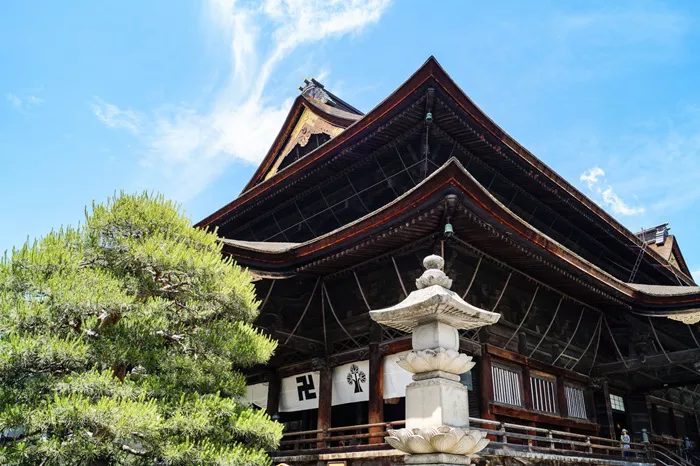Zenkyo-ji is a Buddhist temple with a long history and deep spiritual meaning. It is a place where people come to practice Buddhism, find peace, and learn about the teachings of the Buddha. Many visitors are drawn to Zenkyo-ji because of its calm atmosphere and beautiful surroundings.
In this article, we will explore the history, significance, and features of Zenkyo-ji. We will also look at its place in Buddhist practice and the unique temple architecture that makes it special.
The History of Zenkyo-ji
Origins and Founding
Zenkyo-ji was founded many centuries ago by a famous Buddhist monk. The exact date varies in records, but the temple is known to have been a center for Buddhist learning and meditation since its early years. It was built as a place to honor the Buddha and spread his teachings.
Development Over Time
Over the years, Zenkyo-ji grew in importance. It became a hub for monks and laypeople alike. Many important Buddhist ceremonies and festivals take place here. The temple survived wars, natural disasters, and social changes, showing the strength of its community and beliefs.
Religious Significance of Zenkyo-ji
Role in Buddhist Practice
Zenkyo-ji serves as a place for meditation, prayer, and learning. Buddhists come here to study the Dharma, the teachings of the Buddha. The temple hosts regular meditation sessions and Dharma talks. It also offers rituals for special occasions like births, deaths, and seasonal festivals.
Key Teachings Associated with Zenkyo-ji
The teachings at Zenkyo-ji focus on compassion, mindfulness, and wisdom. Monks and teachers encourage visitors to live with kindness and awareness. The temple’s practices help people reduce suffering and find inner peace.
Temple Architecture of Zenkyo-ji
Design and Structure
The architecture of Zenkyo-ji is a beautiful example of traditional Buddhist style. It features wooden buildings, curved roofs, and carefully arranged gardens. The design is meant to create a peaceful environment that supports meditation and reflection.
Symbolism in the Architecture
Every part of the temple has meaning. The layout often follows Buddhist cosmology, symbolizing harmony between heaven, earth, and humanity. Decorations like statues, paintings, and carvings tell stories from the Buddha’s life and Buddhist scriptures.
Daily Life at Zenkyo-ji
Monks and Their Routine
The monks at Zenkyo-ji live a simple and disciplined life. They wake early, meditate, chant, and study. Their daily routine supports spiritual growth and service to visitors. They also maintain the temple grounds and help organize community events.
Visitors and Pilgrims
Many people visit Zenkyo-ji for different reasons. Some come to meditate quietly. Others seek blessings or guidance from the monks. Pilgrims travel from far away to pay respect and gain merit. The temple welcomes everyone with kindness and openness.
Festivals and Events at Zenkyo-ji
Annual Celebrations
Zenkyo-ji hosts several important festivals each year. These include celebrations of the Buddha’s birth, enlightenment, and passing into Nirvana. During festivals, the temple is decorated with lanterns and flowers. Special ceremonies and prayers are held to invite peace and happiness.
Community Activities
The temple is also a place for local community gatherings. Events like meditation workshops, tea ceremonies, and cultural classes happen regularly. These activities help spread Buddhist values and strengthen social bonds.
How to Visit Zenkyo-ji
Location and Access
Zenkyo-ji is located in a quiet, scenic area that encourages contemplation. Visitors can reach the temple by public transport or car. There are clear signs and maps available for first-time visitors.
What to Expect
When visiting Zenkyo-ji, guests should dress modestly and respectfully. Shoes are usually removed before entering certain halls. Silence or quiet talking is encouraged to maintain the peaceful atmosphere. Visitors can join meditation sessions or simply enjoy walking in the gardens.
Why Zenkyo-ji Matters Today
Spiritual Importance
In today’s fast-paced world, Zenkyo-ji offers a place to slow down and reflect. It reminds people of the values of mindfulness and compassion. The temple continues to teach the Buddha’s wisdom in a way that is relevant for modern life.
Cultural Heritage
Zenkyo-ji also preserves traditional Buddhist culture and buddhist temples heritage. It protects ancient texts, art, and architecture that are valuable for future generations. The temple stands as a bridge between the past and the present.
Conclusion
Zenkyo-ji is much more than just a building. It is a living center of Buddhist practice, culture, and community. Whether you are a Buddhist practitioner or simply curious, visiting or learning about Zenkyo-ji can be a meaningful experience.
This temple teaches important lessons about peace, kindness, and wisdom. Its beautiful architecture and rich history inspire respect and admiration. Zenkyo-ji continues to be a beacon of spiritual light in the world today.

